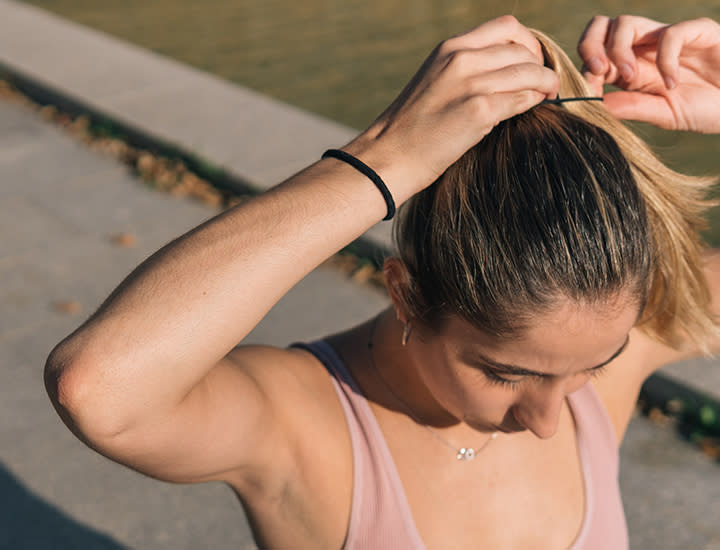The One Common Hair Care Mistake Hair Stylists Say Cause Thinning Hair

While genetics, aging, and stress can be among the biggest culprits responsible for thinning hair, you could be doing things on your very own at home that make the problem worse or could lead to future thinning. Specifically, the one common hair care mistake that hair stylists warn cause thinning hair is tight hairstyles that pull out hair follicles. To learn more, we spoke with Jean Lopez, the co-founder of LilyHair. Read on to discover why tight hairstyles exacerbate thinning hair and for hair-loss-friendly styles you can use instead!

Tight hairstyles
The biggest hair care mistake that Lopez says leads to thinning hair is the excessive style of tight ponytails or hairdos. "Your hairline and hair can be severely damaged by tight ponytails," Lopez explains. "It can yank out a lot of hair, making your hair thin. The use of heating equipment is analogous to washing with steam water. Every hair is to be left vulnerable to damage because the natural oils have been removed. It causes the hair follicles to open, causing further irritation." In fact, there's actually a medical term for this type of hair loss: traction alopecia.
So, while a sleek ponytail, cornrows, or tightly pulled updo can look great, the constant pulling may eventually lead to hair loss. In time, the continuous pulling can damage your hair follicles. And, if you damage your hair follicles excessively, your hair cannot grow back, so you develop permanent hair loss. Yikes!

One way you can fight this is to avoid frequently wearing hairstyles that pull on your hair. Every once in a while is OK, but you want to avoid wearing a tightly pulled hairstyle every single day or else you'll start to notice strands of your hair break or fall out.
Hairstyles that constantly pull on your hair include: buns, ponytails, cornrows, dreadlocks, hair extensions, weaves, tight braids, and any other up-dos that are tightly pulled. And, wearing rollers to bed frequently can also lead to hair loss. Dermatologists recommend styling your hair this way only on special occasions.

Instead, loosen up the hairstyle. Avoid wearing tight ponytails frequently and, when you do style your hair, ensure that it is loose enough to prevent harm to the hair. To reduce the constant pulling, you can: loosen braids (especially around your hairline), wear a braided style for no longer than two to three months, or opt for thicker braids and dreadlocks. Ideally, when you change styles, you want to give your hair a chance to recover. If, for example, you take out your cornrows, you may want to wear loose braids or go natural for a few months to let your scalp breathe and your follicles rest.
"You can also wash your hair with steam, but this is not recommended too often," Lopez suggests. "Make certain to wash it with cold water after steaming it to close your pores and prevent inflammation." Noted!

If you wear hairstyles that pull tightly, take time every month to look for these early signs of hair loss: broken hairs around your forehead, a receding hairline, and/or patches of hair loss where your hair is pulled tightly. If you are experiencing any of the above, it's time to stop pulling on your hair so that your hair can regrow. Unfortunately, if the pulling continues, you may notice that your hair stops growing. Where you once had hair, you'll see shiny, bald skin. When traction alopecia advances to this stage, your hair cannot grow back.
So, a tight hairstyle is one of the most common hair mistakes that can lead to thinning. But, thankfully, there is a very easy solution. Instead of tight hairstyles that pull back on the hair and cause scalp irritation, opt for loose styles like a relaxed braid or a scarp updo. Although you can't always prevent everything that leads to thinner hair, you can help take good care of your hair with the hairstyles you choose.

